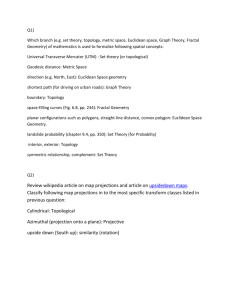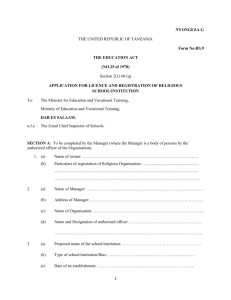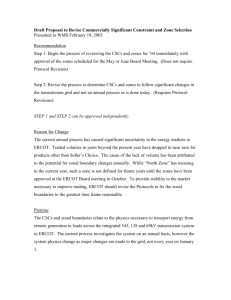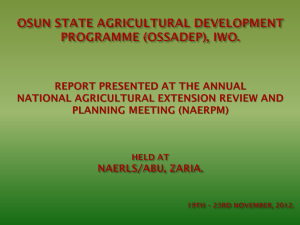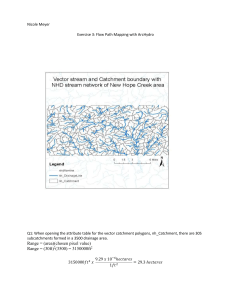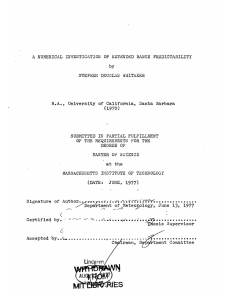mars6abstract
advertisement
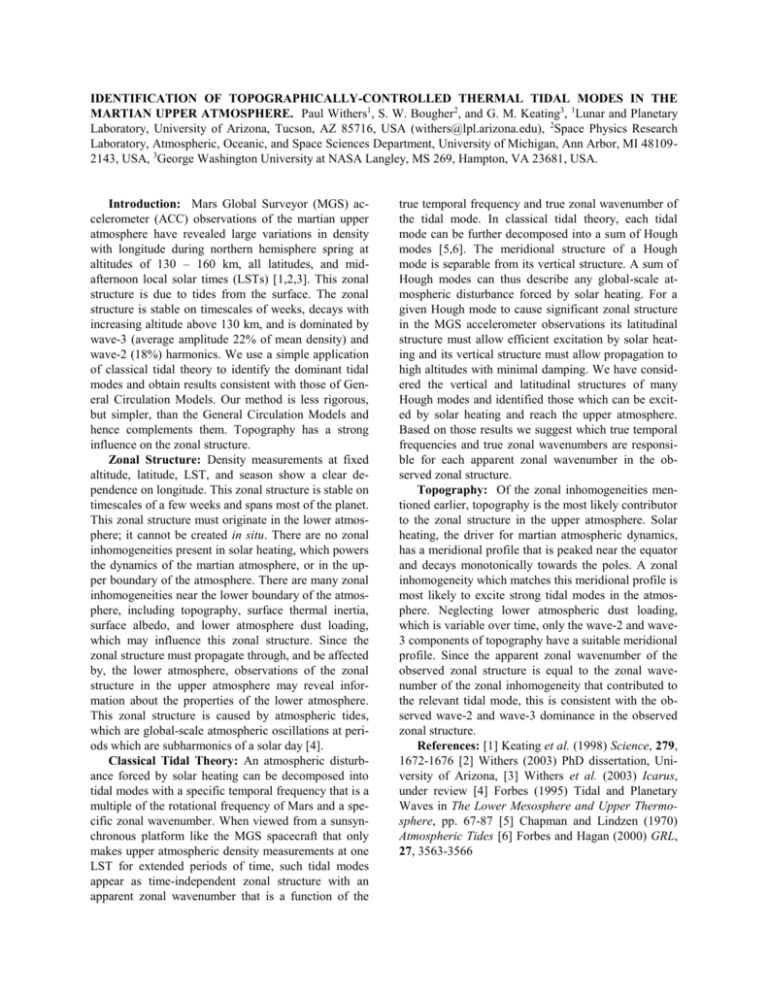
IDENTIFICATION OF TOPOGRAPHICALLY-CONTROLLED THERMAL TIDAL MODES IN THE MARTIAN UPPER ATMOSPHERE. Paul Withers1, S. W. Bougher2, and G. M. Keating3, 1Lunar and Planetary Laboratory, University of Arizona, Tucson, AZ 85716, USA (withers@lpl.arizona.edu), 2Space Physics Research Laboratory, Atmospheric, Oceanic, and Space Sciences Department, University of Michigan, Ann Arbor, MI 481092143, USA, 3George Washington University at NASA Langley, MS 269, Hampton, VA 23681, USA. Introduction: Mars Global Surveyor (MGS) accelerometer (ACC) observations of the martian upper atmosphere have revealed large variations in density with longitude during northern hemisphere spring at altitudes of 130 – 160 km, all latitudes, and midafternoon local solar times (LSTs) [1,2,3]. This zonal structure is due to tides from the surface. The zonal structure is stable on timescales of weeks, decays with increasing altitude above 130 km, and is dominated by wave-3 (average amplitude 22% of mean density) and wave-2 (18%) harmonics. We use a simple application of classical tidal theory to identify the dominant tidal modes and obtain results consistent with those of General Circulation Models. Our method is less rigorous, but simpler, than the General Circulation Models and hence complements them. Topography has a strong influence on the zonal structure. Zonal Structure: Density measurements at fixed altitude, latitude, LST, and season show a clear dependence on longitude. This zonal structure is stable on timescales of a few weeks and spans most of the planet. This zonal structure must originate in the lower atmosphere; it cannot be created in situ. There are no zonal inhomogeneities present in solar heating, which powers the dynamics of the martian atmosphere, or in the upper boundary of the atmosphere. There are many zonal inhomogeneities near the lower boundary of the atmosphere, including topography, surface thermal inertia, surface albedo, and lower atmosphere dust loading, which may influence this zonal structure. Since the zonal structure must propagate through, and be affected by, the lower atmosphere, observations of the zonal structure in the upper atmosphere may reveal information about the properties of the lower atmosphere. This zonal structure is caused by atmospheric tides, which are global-scale atmospheric oscillations at periods which are subharmonics of a solar day [4]. Classical Tidal Theory: An atmospheric disturbance forced by solar heating can be decomposed into tidal modes with a specific temporal frequency that is a multiple of the rotational frequency of Mars and a specific zonal wavenumber. When viewed from a sunsynchronous platform like the MGS spacecraft that only makes upper atmospheric density measurements at one LST for extended periods of time, such tidal modes appear as time-independent zonal structure with an apparent zonal wavenumber that is a function of the true temporal frequency and true zonal wavenumber of the tidal mode. In classical tidal theory, each tidal mode can be further decomposed into a sum of Hough modes [5,6]. The meridional structure of a Hough mode is separable from its vertical structure. A sum of Hough modes can thus describe any global-scale atmospheric disturbance forced by solar heating. For a given Hough mode to cause significant zonal structure in the MGS accelerometer observations its latitudinal structure must allow efficient excitation by solar heating and its vertical structure must allow propagation to high altitudes with minimal damping. We have considered the vertical and latitudinal structures of many Hough modes and identified those which can be excited by solar heating and reach the upper atmosphere. Based on those results we suggest which true temporal frequencies and true zonal wavenumbers are responsible for each apparent zonal wavenumber in the observed zonal structure. Topography: Of the zonal inhomogeneities mentioned earlier, topography is the most likely contributor to the zonal structure in the upper atmosphere. Solar heating, the driver for martian atmospheric dynamics, has a meridional profile that is peaked near the equator and decays monotonically towards the poles. A zonal inhomogeneity which matches this meridional profile is most likely to excite strong tidal modes in the atmosphere. Neglecting lower atmospheric dust loading, which is variable over time, only the wave-2 and wave3 components of topography have a suitable meridional profile. Since the apparent zonal wavenumber of the observed zonal structure is equal to the zonal wavenumber of the zonal inhomogeneity that contributed to the relevant tidal mode, this is consistent with the observed wave-2 and wave-3 dominance in the observed zonal structure. References: [1] Keating et al. (1998) Science, 279, 1672-1676 [2] Withers (2003) PhD dissertation, University of Arizona, [3] Withers et al. (2003) Icarus, under review [4] Forbes (1995) Tidal and Planetary Waves in The Lower Mesosphere and Upper Thermosphere, pp. 67-87 [5] Chapman and Lindzen (1970) Atmospheric Tides [6] Forbes and Hagan (2000) GRL, 27, 3563-3566


